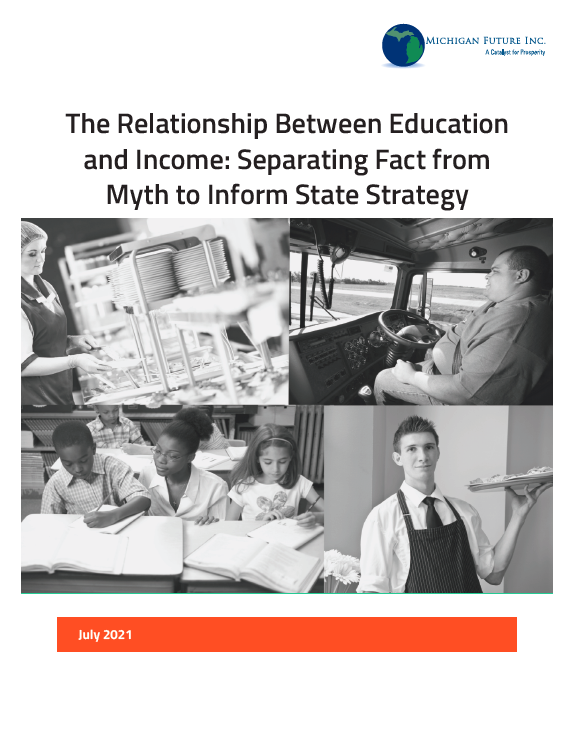Michigan Future is always trying to understand the reality of today’s economy and labor market. Our mission is to catalyze a future for Michigan where all families can thrive, which means that all families have the chance to earn a decent income that allows them to afford the necessities, save for emergencies, and help prepare for the future–retirement or education. Our new report, The Relationship Between Education and Income: Separating Fact from Myth to Inform State Strategy, is based on our desire to ground conversations about how to help Michigan families with an understanding of the labor market they actually live in. We want to make sure those conversations aren’t based in an image of Michigan’s workforce and booming middle class that we might carry with us from an earlier decade.
Don Grimes of the University of Michigan performed the data analysis in this report, which uses Bureau of Labor Statistics data about the 4.3 million jobs in Michigan, the median wage of their occupations, and the education those occupations require.
It’s important to note that this report uses data from 2019, which most people considered to be a strong economy. Yet, it was an economy where almost two in five Michigan households couldn’t afford basic necessities. We try to explain the disconnect.
Our basic findings are:
- The majority of jobs in Michigan are in low-wage occupations. This preponderance of low-wage work is a structural characteristic of today’s economy.
- More than half of Michigan payroll jobs are in occupations that don’t require any education beyond a high school diploma. This part of the labor market largely overlaps with those low-wage occupations.
- Almost 80 percent of jobs in the higher-wage occupations require a B.A. or more. There are no guarantees to a good income, but a B.A. is the surest way to be prosperous.
- The highest-wage category is dominated by professional and managerial work that requires a B.A., not by STEM jobs exclusively or by blue collar jobs.
- And lastly, while there is still a segment of the job market that requires a non-B.A., post-secondary credential and also pays in the middle wages, it’s a smaller segment than the popular imagination holds.
To see the details behind the data and the analysis, click here for the full report.









